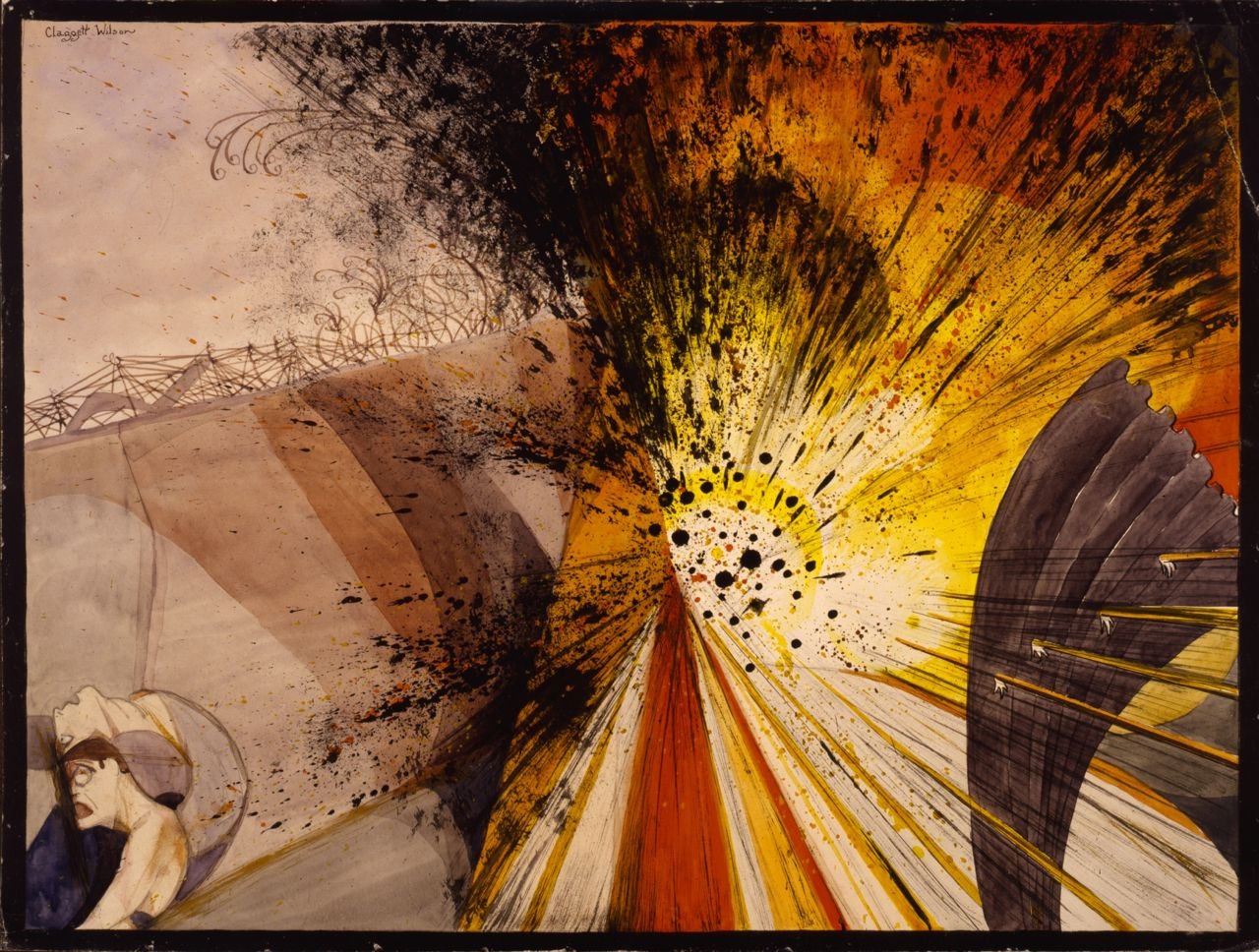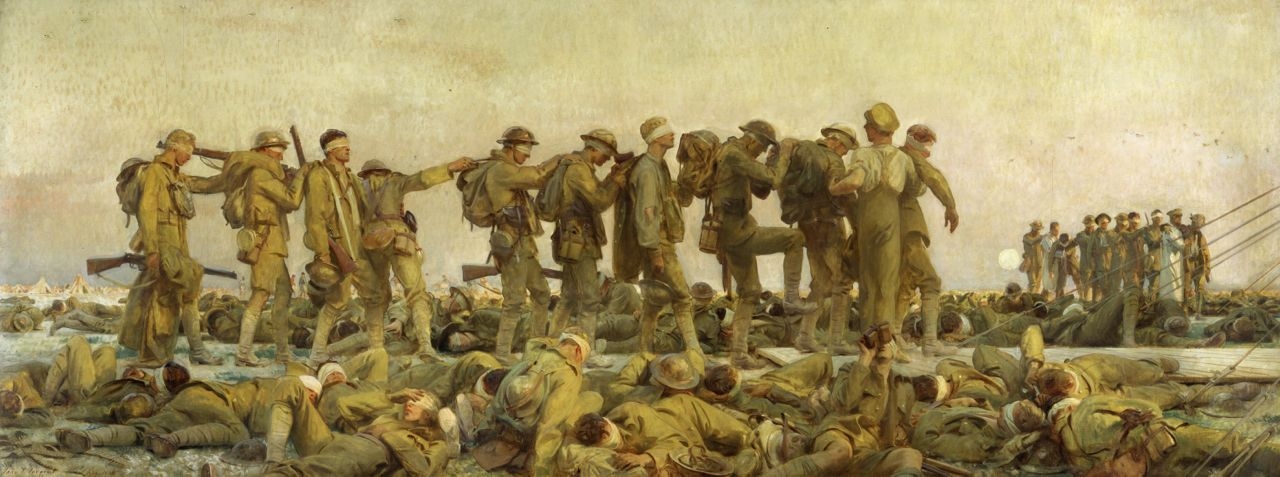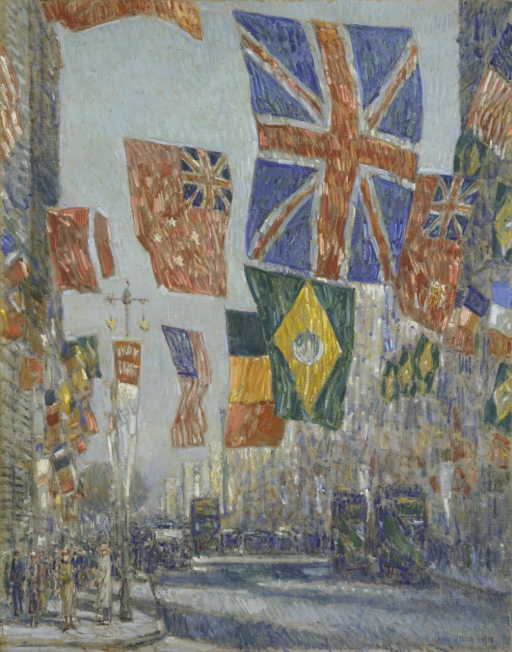The first major exhibition devoted to exploring how American artists reacted to the First World War is opening this week in Philadelphia.
World War I and American Art is being staged at the Pennsylvania Academy of the Fine Arts in the run up to the Centennial in April 2017, and features the work of some 80 artists from the time.
The exhibition revisits a crucial moment in modern American history through the eyes of artists who played an important role in crafting images which affected public opinion at the time: images which supported the U.S. government’s mobilisation efforts in 1917 and 1918, but which also showed some of the horror of war and which helped shape the way those who were fighting were ultimately remembered.
 Claggett Wilson: Flower of Death—The Bursting of a Heavy Shell— Not as It Looks, but as It Feels and Sounds and Smells, Smithsonian American Art Museum (Photo: Smithsonian American Art Museum, Washington, DC/Art Resource, NY)
Claggett Wilson: Flower of Death—The Bursting of a Heavy Shell— Not as It Looks, but as It Feels and Sounds and Smells, Smithsonian American Art Museum (Photo: Smithsonian American Art Museum, Washington, DC/Art Resource, NY)
Organised around eight themes including The Threat of War, Battlefields and The Wounded and the Healers, the exhibition seeks to explore both the reaction of the artists to the changing times and moods of the war years and also to show how the modernist art movements of the time dealt with those themes.
Arranged around the narrative of the war itself, the exhibition follows the artists as they chronicle their experiences of war as America first joined the conflict; and then as the war involves them directly as soldiers, relief workers or official war artists.
The exhibition includes a number high-profile paintings loaned by other galleries, such as John Singer Sargent’s monumental painting, Gassed, from the Imperial War Museum in London.
Gassed is based on a haunting scene witnessed by the artist at an evacuation checkpoint: rows of British soldiers, their heads wrapped in gauze to protect eyes temporarily blinded by mustard gas, being led by orderlies to a dressing station. Its power rests partly on the tragedy of the tableau – the brutality of war blinding a young generation as the men pick their way through a broken landscape, wading through the bodies of fallen comrades – but also on the humanity of these men as they cling on to one another, helping themselves and their group along the line to safety.
 Gassed: John Singer Sargent, 1919, Imperial War Museums, London (Photo: ©IWM Art.IWM ART 1460)
Gassed: John Singer Sargent, 1919, Imperial War Museums, London (Photo: ©IWM Art.IWM ART 1460)
The war was being waged when the emerging styles of the modernist movements were still being digested and adapted by the American art world. Images made during the war reveal American artists in transition, sometimes using experimental forms to capture some of the terror of the conflict; at other times employing straightforward depictions of the conflict to make the connection to their audience back home.
The 160-odd works on display encompass a broad variety of stylistic approaches, viewpoints and experiences and they are chronicled in paintings, prints, photographs and posters. The exhibition includes a diverse array of both well-known and under-recognised artists including Ivan Albright, George Bellows, Charles Burchfield, John Steuart Curry, James Montgomery Flagg, Henry Glintenkamp, Marsden Hartley, Childe Hassam, Carl Hoeckner, Mary Reid Kelley, George Luks, John Marin, Violet Oakley, Georgia O’Keeffe, Joseph Pennell, Jane Peterson, Man Ray, Boardman Robinson, Norman Rockwell, Edward Steichen and Claggett Wilson.
A small selection of work by contemporary artists who have confronted World War I’s legacy in their work will also appear as well as an exhibition of work by living military veterans in the Warrior Writers programme in Philadelphia.
World War I and American Art is at the Pennsylvania Academy of the Fine Arts, Philadelphia, from 4 November 2016 – 9 April 2017.
Source: Pennsylvania Academy of the Fine Arts, 118-128 North Broad St., Philadelphia, PA 19102
Image credits:
Avenue of the Allies, Great Britain, 1918, Childe Hassam (1859–1935) 1918. Oil on canvas, 36 × 28 3/8 in. The Metropolitan Museum of Art, New York, Bequest of Miss Adelaide Milton de Groot (1876– 1967), 1967, 67.187.127 Photo: ©The Metropolitan Museum of Art/Art Resource, NY
Flower of Death—The Bursting of a Heavy Shell— Not as It Looks, but as It Feels and Sounds and Smells, Claggett Wilson (1887–1952) c. 1919. Watercolour and pencil on paperboard, 16 1⁄2 × 22 in. Smithsonian American Art Museum, Gift of Alice H. Rossin, 1981.163.18 Photo: Smithsonian American Art Museum, Washington, DC/Art Resource, NY
Gassed, John Singer Sargent (1856–1925), 1919. Oil on canvas, 90 1⁄2 × 240 in. Imperial War Museums, London, Photo: ©IWM Art.IWM ART 1460)
Posted by: CN Editorial Team
